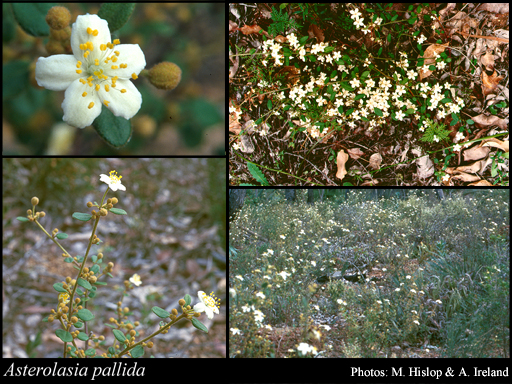- Reference
- Fl.Austral. 1:352 (1863)
- Conservation Code
- Not threatened
- Naturalised Status
- Native to Western Australia
- Name Status
- Current
Sometimes rhizomatous, woody perennial, herb, 0.3-1 m high, leaves 1-2.5 cm long; petals 4-8 mm long. Fl. white, Jun to Nov. On laterite or over granite.

Scientific Description
Shrub, spines absent, +/- cylindrical in cross-section, covered in hairs or scales, the hairs stellate (star-shaped). Leaves alternate, simple, 3.5-4 mm long, 1.5-2 mm wide, flat, the margins flat, smooth, without distinct raised glands, covered in hairs or scales, with stellate (star shaped) hairs; stipular excrescences absent. Flowers in axillary umbels or in terminal umbels; pedicels 9-10 mm long; calyx minute or absent, smooth, without distinct raised glands; corolla white or cream, petals five, 4-7.5 mm long, valvate (not overlapping), free, hairy on the surfaces; stamens numerous (more than twice as many as petals), 3.7-6 mm long, smooth, glabrous; anthers 0.8-1 mm long, without an appendage; style 4 mm long, glabrous. Flowers in June, July, August, September, October and November. Occurs in the South-West Botanical Province, in the Jarrah Forest IBRA region(s).
Distribution
- IBRA Regions
- Jarrah Forest, Swan Coastal Plain.
- IBRA Subregions
- Northern Jarrah Forest, Perth, Southern Jarrah Forest.
- Local Government Areas (LGAs)
- Armadale, Beverley, Chittering, Harvey, Kalamunda, Mundaring, Murray, Nannup, Serpentine-Jarrahdale, Swan, Wandering, Waroona, York.